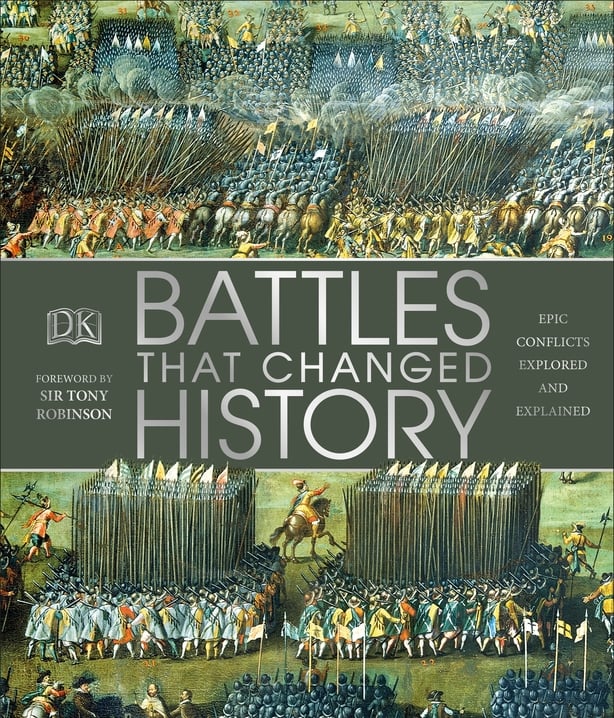Battles that Changed History heaves with evocative illustrations which in themselves are celebrated art- works, making this 250-page coffee table format volume a fascinating journey through the past.
Broken up in columns, accessible and appealing, design-wise, it's easy to dip into. Tony Robinson, the veteran TV presenter of history programmes, provides an introduction which neatly sets the scene in two pages. Battles that Changed History is a particularly useful work, according to Robinson, for anyone seeking to understand "the profound political, social, and economic consequences of these military conflicts, and in so doing how kingdoms have been won and lost on the battlefield."
Some battles led to the collapse of an empire, like Hannibal’s defeat at Zuma which summarily ended his military gallop through land and sea. Babur’s victory over the Delhi sultan at Panipat in 1526 brought us the early forms of the Mughal empire. We learn how the Battle of Pavia (a city in present-day Italy) in 1525 saw the earliest outcome of battle determined by hand-held firearms.
Hannibal won at Cannae in 216 BC by enveloping the Roman Army’s wings which battle formation has been reprised in modified versions ever since. In the course of the study of key battlefields associated with Alexander the Great, Julius Caesar, Napoleon Bonaparte, Genghis Khan, Simon Bolívar, George Washington, we learn something about the psychology and motivation of these men.

First out of the traps is the Battle of Marathon, which took place in 490 BC during the Greco-Persian wars and the last battle under consideration is Operation Desert Storm, mounted in 1991, during the Gulf War.
Beautiful artworks do much more than embellish, indeed they take up the entire page, as in the case of the 16th century miniature from Topkapi Palace in Istanbul. The painting depicts Hungarian troops and Ottoman forces at the battle of Mohacs in Southern Hungary in 1526.
The First World War Battle of Passchendale in Belgium (1917) is told with the aid of two photographs and a generously well-spread war painting by Paul Nash. The conflict was fought at the cost of 16,000 casualties and by the time the fighting ended with the capture of Passchendale Ridge on November 10, each side had suffered about a quarter of a million casualties, with no strategic objective achieved.
There is not much directly of Irish interest; the Battle of the Boyne gains a modest column with no illustration. The same size column, with approximately the same word count, is devoted across the relevant two pages to Yangzhou, Solebay, Zenta, Sacheon, Sekigahara, Ivry, Alcacer Quibir, Cajamarca, Marignano.
Do they sound familiar? Thought so, and indeed the battles at each of these locations took place in the time period of that chapter, 1500- 1700, contemporaneous, give or take, with our much-vaunted Boyne conflict. Somehow this puts most wars in a certain perspective. We don’t know the half of it, to say the least.







